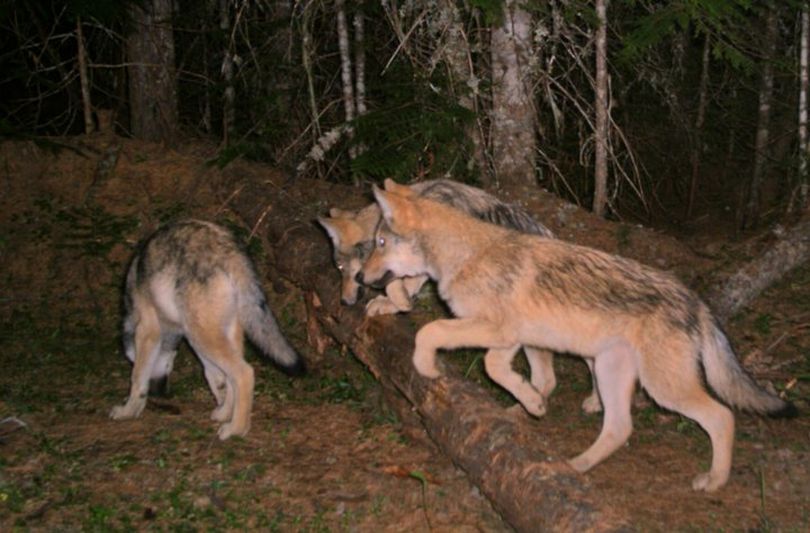Wolf numbers doubled in 2012, Washington report confirms

ENDANGERED SPECIES -- Although the unofficial estimates have been out for weeks, the Washington Fish and Wildlife today confirmed that the number of confirmed gray wolves and wolf packs in the state nearly doubled during the past year.
Based on field reports and aerial monitoring for the annual report, the 2012 survey confirms the presence of at least 51 wolves in nine wolf packs with a total of five successful breeding pairs. The previous year’s survey documented 27 wolves, five wolf packs and three breeding pairs.
A wolf pack is defined as two or more wolves traveling together. A successful breeding pair is defined as an adult male and female with at least two pups that survive until the end of the calendar year.
“The survey shows that our state’s wolf population is growing quickly,” said Nate Pamplin, WDFW wildlife program director. “That growth appears to be the result of both natural reproduction and the continuing in-migration of wolves from Canada and neighboring states.”
Pamplin said the actual number of wolves in Washington state is likely much higher than the number confirmed by the survey, noting that field biologists currently suspect the existence of two additional packs.
In addition, lone wolves often go uncounted and those that range into Washington but den in other states are not included in WDFW’s survey, he said.
Considering those factors, and applying an estimate of the average pack size in other western states, there could easily be as many as 100 wolves in Washington, Pamplin said.
“The survey is the baseline we use to monitor wolves’ progress toward recovery,” he said. “While we’ve stepped up our monitoring efforts significantly over the past year, we recognize that it does not account for every wolf within our state’s borders.”
One of the nine packs represented in the survey is the Wedge pack, which now has two confirmed members in northeastern Washington. Last summer, WDFW eliminated seven members of the pack to end a series of attacks on an area rancher’s cattle that left six calves dead and 10 other animals injured.
Pamplin said wildlife biologists do not know whether the two wolves living near the U.S.-Canada border in Stevens County are members of the original Wedge pack or whether they are new arrivals from inside or outside the state.
“Either way, we were confident that wolves would repopulate that area,” he said. “We really hope to prevent the kind of situation we faced with the Wedge pack last summer by working with ranchers to use non-lethal methods to protect their livestock.”
The gray wolf is currently listed by the state as an endangered species throughout Washington and is federally listed as endangered in the western two-thirds of the state. Once common, wolves were essentially eliminated in most western states during the past century because they preyed on livestock.
Under the state’s Wolf Conservation and Management Plan, wolves can be removed from the state’s endangered species list once 15 successful breeding pairs are documented for three consecutive years among three designated wolf-recovery regions. Four pairs are required in Eastern Washington, four pairs in the North Cascades, four pairs in South Cascades/Northwest Coast and three pairs in any recovery region.
Reports of possible wolf sightings can be made to WDFW’s wildlife reporting line, (877) 933-9847.
